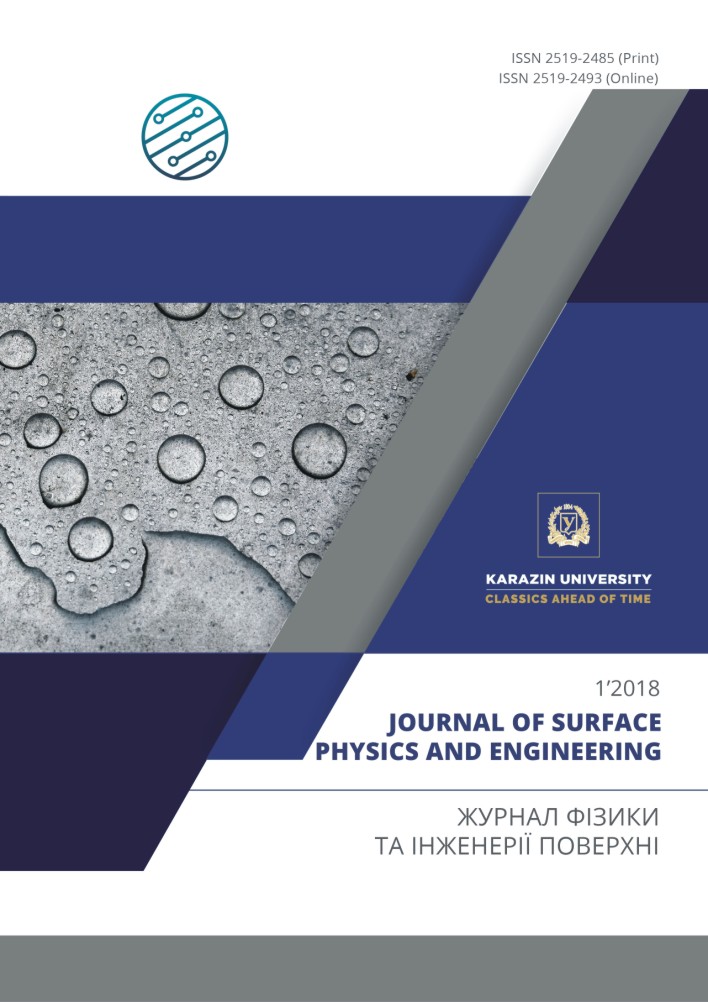Отримання та властивості системи «нанопористий вуглецевий матеріал – квантові точки CdS»
Анотація
Квантові точки (КТ) на сьогодні є об’єктами інтенсивних досліджень багатьох наукових груп. КТ напівпровідникових сполук А2В6 привертають особливу увагу завдяки можливості управляти розмірами КТ в процесі їх синтезу, що дає можливість отримати необхідні електронні і оптичні властивості.Успішне вирішення проблеми отримання КТ напівпровідникових матеріалів з відповідними контрольованими властивостями в значній мірі залежить від вибору середовища, в якому реалізується їх синтез. Інкапсуляція наночастинок або введення їх у хімічно інертну матрицю дає можливість не тільки ізолювати КТ від хімічно активного середовища, а й отримати систему наночастинок з певними заданими розмірами (розмірами пор матриці). Саме тому, перспективним матеріалом матриці є нанопористий вуглецевий матеріал (НВМ), який є хімічно інертним для більшості лугів і кислот, і в якому можна отримувати необхідні розміри пор для впровадження КТ.
Завантаження
Посилання
Alivisatos A. P. Perspective son the physical chemistry of semiconductor nanocrystals // J. Phys. Chem. – 1996. – Vol. 100, No. 31. – P. 13226-13239.
Alivisatos A. P. Semiconductor clusters, nanocrystals, and quantum dots // Science – 1996. –V. 271, №5251. – P. 933-937.
Brus L. E. Electron-electron and electron-hole interaction sinsmall semiconductor crystallites: the size dependence of the lowes texcited electronicstate // J. Chem. Phys. – 1984. – Vol. 80. – P. 4403-4409.
Colvin V. L., Alivisatos A. P., Tobin J. G., Superlattices Microstruct // Phys. Rev. Lett., – 1991. – Vol. 66. – P. 2786.
Goldstein A. N., Echer C. M., Alivisatos A. P. // Science. - 1992. – Vol. 256. – P. 1425-1427.
Hikmet M., Talapin V., Weller H. Study of conduction mechanism and electroluminescence in CdSe/O˜ZnS quantum dot composites // J. Appl. Phys. – 2003. – Vol. 93. – P. 3509-3514.
Huynh W.V., Dittmer J.J., Alivisatos A.P. Hybrid nanorod-polymer solarcells // Science. – 2002 . – Vol. 295, No. 5564. – P. 2425-2427.
Brus L.E. Quantum crystallites and nonlinear optics // Appl. Phys. A: Mater. Sci. Process. – 1991. – Vol. 53, No. 2283. – P.465-474.
Burova L. I., Pelukhov D. I., Eliseev A. A. Preparation and properties of ZnO nanoparticles in the mesoporous silicamatrix // Superlattices and Microstructures. – 2006. – Vol. 39. – P. 257-266.
Shvets R. Ya., Grygorchak I. I., Borysyuk A. K., Shvachko S. G., Kondyr A. I., Baluk V. I., Kurepa A. S., and Rachiy B. I. New Nanoporous Biocarbons with Ironand Silicon Impurities: Synthesis. Properties. and Application to Supercapacitors // Physics of the Solid State. – 2014. – Vol. 56, No. 10. – P. 2021-2027.
Rachiy B. I., Nykoliuk M. O., Budzulyak I.M., Kachmar A. I. Ultrasonic modification of carbon materials for electrochemical capacitors // Nanoscale Research Letters. – 2017. – Vol. 12:79. DOI 10.1186/s11671-017- 1842-1
Marsh H. Rodriguez-Reinos of Activatedcarbon // Amsterdam: Eslevier. – 2006. –542 p.
Fitzer E., Kochling K., Boehm H., Marsh H. Recommended terminology for the description of carbon as a solid // International union of pure and applied chemistry. – 1995. – Vol. 67, No. 3. – Р. 473-506.
Стойнов З. Б., Графов Б. М., Савова-Стойнова Б., Елкин В. В. Электрохимический импеданс // Наука, 1991. – 336 с.
Bobnar V., Lunkenheimer P., Paraskevo-poulos M., Loidl A. Separation of grainboundary effects and intrinsic properties in perovskite-like Gd0.6Y0.4BaCo2O5.5 using high-frequency dielectric spectroscopy. // Phys. Rev. B. – 2002. – Vol. 65. – P. 184403-184403.
Biniak S., Swiatkowski A., Pakula M., Radovic R. Chemistry and physics of carbon. // New York: Marcel Dekker. – 2001. – Vol. 27. – P. 125.
Лебовка М., Гончарук А., Бойко Ю. Міжфазові взаємодії та електрична провідність в композитах вуглецеві нанорурки/рідкий кристал // Наносистеми, наноматеріали, нанотехнології. – 2009. – Т. 7, № 3. – С. 701-715.
Орешкин П. Т. Фізика полупроводников и диэлектриков // Москва: Высшая школа. – 1977. – C. 448.




